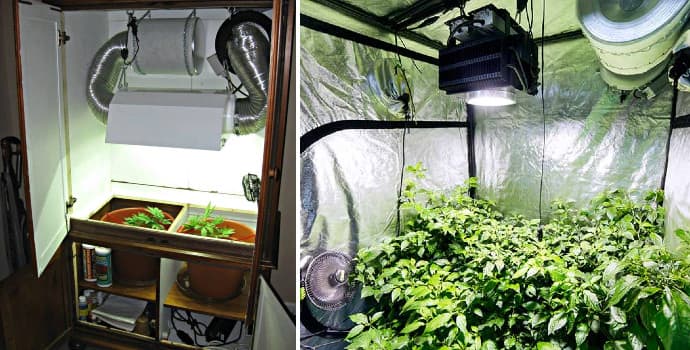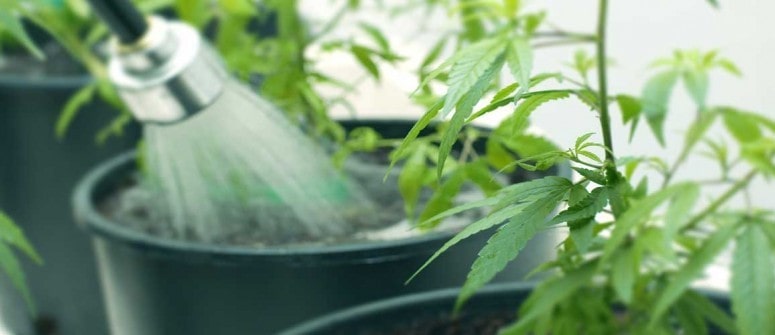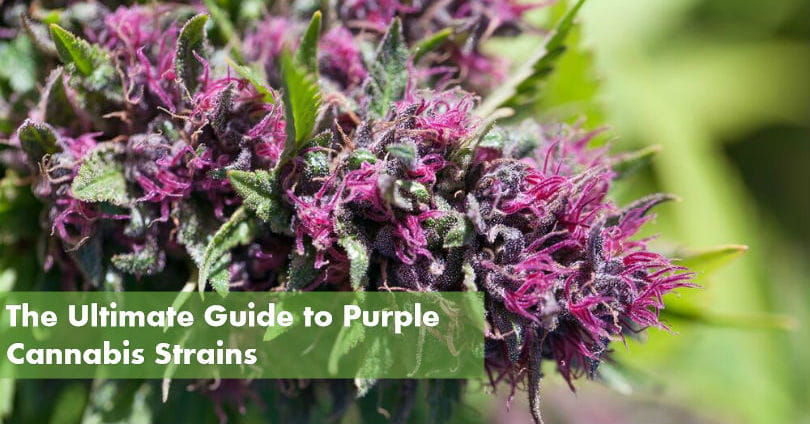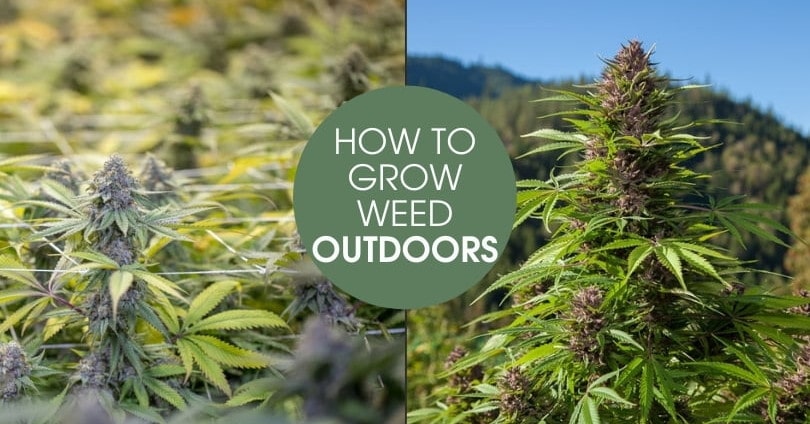 Growing weed indoors is one of the most rewarding experiences because there’s nothing that beats homegrown weed.
Growing weed indoors is one of the most rewarding experiences because there’s nothing that beats homegrown weed.
Now that you’re committed to learning how to grow weed indoors, it’s time to go over the necessary steps to transform you from a beginner to a green thumb.
Let’s begin!
How Much Does It Cost to Grow Weed Indoors?
Before you do anything, you must understand the cost of growing weed indoors.
Overall, the cost of growing marijuana indoors ranges from $1,000 to $5,000 and beyond. The final cost of your indoor garden depends entirely on:
- The number of plants
- The total wattage
- Equipment
Since indoor gardens are entirely dependent on the environment you create, you can’t skimp on the necessary equipment. Simultaneously, as a beginner, you must not dive headfirst into complicated and expensive tools for the garden.
Therefore, you must find a happy medium that maintains a manageable cost while producing a stellar crop of crystal-coated nugs.
Let’s look at the cost of two different examples — a single plant closet grow and a medium-sized grow tent with ten plants to give you an idea of the cost to grow marijuana indoors.
1. The Cost to Grow a Single Plant in a Closet
- Feminized cannabis seeds: $65 per 5-pack of seeds (Crop King)
- Autoflowering cannabis seeds: $65 per 5-pack seeds (Crop King)
- 10-Gallon Smart Pot: $25
- Sun Gro’s Sunshine Mix Advanced #4 Soilless Blend: $25 per 2.2-cubic feet
- Bottled nutrients: $30-60 (1-liter grow and bloom bottles)
- Watering can: $15; 2.5-gallon capacity
- pH meter: $40
- Miscellaneous hardware: $50 (trimming scissors, trellis netting, support pole)
- Water: The cost of water will depend on your local water district.
- Lighting: $150 (600w LED grow light system)
- 2-4 months of electricity: $150-300
- 4″ inline fan and ducting: $40
- Hardware to build the grow space: $125
In this case, the example depicts a 3×3′ closet grow that contains a single cannabis plant.
Due to the small space, we opted to harness the efficiency of an LED system. Although the LED is marked as a “600-watt,” — its actual draw is 265-watts.
Furthermore, we decided not to utilize a dedicated hydroponic system to keep the overall cost down. Therefore, the price to grow a single cannabis plant in a 3×3′ closet is roughly $1,000.
2. The Cost to Grow Ten Plants in a Grow Tent
Next, here’s an example of an 8×4′ grow tent that contains ten cannabis plants.
- Feminized cannabis seeds: $90-120 per 10-pack of seeds (MSNL, Crop King, ILGM)
- Autoflowering cannabis seeds: $90-120 per 10-pack seeds (MSNL, Crop King, ILGM)
- (10) 6″ Rockwool Cubes: $80
- (2) 3×6′ Flood Trays: $300
- Bottled nutrients: $90-120 (4-liter Grow and Bloom bottles)
- FloraFlex Rockwool Irrigation Kit: $200
- Watering Reservoir: $250; 265-gallon water reservoir
- pH meter: $40
- EC meter: $100
- Miscellaneous hardware: $50 (trimming scissors, trellis netting, PVC support pole)
- Water: The cost of water will depend on your local water district.
- Lighting: $270; (2) 600-watt HID system (hood, ballast, bulb, timer)
- 2-4 months of electricity: $400-1,600 (depends on your region)
- 8″ inline fan with carbon filter and accessories: $150
- 8×4′ grow tent: $200
- Environmental Controller: $40
- (Optional) Portable AC Unit: $500
An 8×4′ grow tent increases the number of plants you can grow, but it also allows you to utilize more equipment. In this case, we decided to utilize rockwool cubes’ efficiency and drip irrigation in a drain-to-recycle system.
Overall, the cost of this setup is roughly $2,500. Although $2,500 may sound expensive, you can now grow weed year-round with equipment that will pay for itself throughout each harvest.
As you can see, the cost of electricity varies depending on your region. Some regions are blessed with low power costs, whereas others pay an arm-and-a-leg.
Q: How Much Does It Cost to Grow Weed Indoors?
A: Overall, the cost of growing marijuana indoors ranges from $1,000 to $5,000 and beyond. The final cost of your indoor garden depends entirely on the number of plants, the total wattage, and the equipment.
The Yield of Growing Weed Indoors
Next, it’s time to look at the yield of growing weed indoors. This is the subject that most of you have been waiting for —- and you won’t be disappointed.
Each indoor cannabis strain can pump out between 400-800-grams per meter squared. Once again, the final yield depends on multiple factors, such as:
- Genetics
- Indoor Environment
- Strain Difficulty
Indoor environments provide all the TLC a cannabis plant could ever dream of — ideal temperatures, calculated doses of nutrients, and uninterrupted light. When you consider this, it’s no wonder why indoor cannabis plants yield truckloads of resin-coated buds.
As long as you choose easy-to-grow feminized or autoflowering seeds — you’ll be surprised by how quickly you’ll feel like a green thumb.
Let’s take a look at potential yields that you can attain within 7-12-weeks of flowering from feminized and autoflowering strains indoors.
- Feminized indica: 350-450-grams per meter squared
- Feminized hybrid: 400-700-grams per meter squared
- Feminized sativa: 400-700-grams per meter squared
- Autoflowering indica: 200-300-grams per meter squared
- Autoflowering hybrid: 300-400-grams per meter squared
- Autoflowering sativa: 200-300-grams per meter squared
It’s essential to note that these are estimated yields. Once you choose a pack of feminized or autoflowering seeds, you may or may not reach the maximum yield.
For example, the Silver Haze Automatic Feminized strain can yield up to 200-300-grams per meter squared. However, your cultivation skills, environment, and underlying genetics will determine the final yield.
Furthermore, you will yield more per plant with feminized seeds. Feminized seeds grow larger than automatic strains, and therefore, produce more weed. However, bigger isn’t always better — especially for indoor growers with limited space.
Alternatively, autoflowering strains are small in stature and produce less bud per plant than feminized strains. However, you can fix this potential yield deficit by adding more automatic plants in the garden.
Q: How Much Does One Marijuana Plant Yields Indoors?
A: Each indoor cannabis plant can yield between 400-800-grams per meter squared.
Total Value For Money and Effort
Now, you must wonder — is it worth it to grow weed indoors?
For most, the answer to this question lies in the final harvest. Generally speaking, the larger the yield, the higher the total value for money and effort spent. However, how can we quantify the total value to see if our efforts are worth the investment of growing cannabis indoors?
Let’s take a brief look at two ideas that you must understand as a budding cannabis cultivator. However, we recommend that you read our full analysis on the topic of How to Increase The Total Value for Money and Effort of Growing Cannabis Indoors (Comming Soon…).
The Golden Ratio of Gram-Per-Watt
Aside from the estimated yield per meter squared, we should also mention the idea of gram-per-watt. Although this concept is not primarily suitable for beginners — it’s worth briefly discussing.
Gram-per-watt is precisely what it sounds like — it’s the calculation of how much weed one watt of light produces. The overarching goal of any indoor cannabis cultivator is to reach the golden ratio — 1g/watt.
However, the average gram-per-watt for beginners is roughly 0.25-0.50g/watt.
Golden Ratio: Gram ÷ Watt = 1
Potential Price Per Gram of Growing Cannabis Indoors
Depending on your inner green thumb, the price per gram of growing weed indoors may vary dramatically.
Let’s take the example discussed above regarding the single plant closet grow. The total cost is roughly $1,000, and depending on the strain, the final yield is 250-grams.
In this case, the cost per gram is $4 per gram. Although this may seem high compared to outdoor gardens, the quality is unlike anything you’ve seen before.
In the second example, the total cost to grow ten plants is estimated at $2,500. Let’s say the final harvest is 1,000-grams; therefore, the price per gram is $2.50.
Ultimately, the price per gram decreases if you choose high-yielding feminized or autoflowering cannabis seeds.
Which Strains Are Best For Growing Weed Indoors?
The next question that bubbles to the surface is what strain should I grow indoors?
There’s no right or wrong answer to this question as long as you follow our criteria on how to choose the best weed strain for your indoor garden.
From body-numbing indicas to mind-blowing sativas and everything in-between, you’ll be floored by the diversity of strains available at your fingertips.
How to Choose The Best Indoor Weed Strain
The criteria to choose the best weed strain indoors is relatively simple:
- Indica, sativa, or hybrid?
- Are they feminized or autoflowering?
- Grow difficulty
- Cannabinoid content
- Yield potential
- Terpene profile
- Bag appeal
- Overall value
From the buds’ flavor to the overall growing experience, these categories are essential to understand when choosing which strains to grow indoors. Luckily, you can learn how to select the best cannabis strains on our Best Cannabis Seeds Buyer’s Guide.
The Best Strains to Grow Indoors For Beginners
There are, however, specific feminized or autoflowering strains that are geared directly for indoor cultivation and beginners.
Here’s a snippet of easy-to-grow marijuana strains for the indoor grow room:
- Strawberry Kush
- Power Plant
- Big Bud
Head over to our full list of The Best Indoor Cannabis Strains and discover genetics that you shouldn’t miss!
What Equipment is Needed to Grow Cannabis Indoors?
Growing weed indoors is highly dependent on various pieces of equipment.
From lighting to airflow, you must harness various tools to mimic the great outdoors. By using high-quality tools, your indoor marijuana garden will be healthy and productive with each subsequent cycle.
Here’s a checklist of essential pieces of equipment for your indoor garden:
- HID, LED, or plasma lighting
- Grow tent (or DIY grow room)
- Environmental controllers and timers
- Lighting accessories (hangers, lamp cords, PAR meter)
- Hydroponic medium (if you choose to grow with hydroponics)
- Flood table or tray
- Soil (if you decide to grow indoors with soil)
- pH and EC meters
- Bottled Nutrients
- Feminized or autoflowering seeds
- Irrigation kit (or watering can if hand watering)
- Water reservoir
- Trimming scissors or pruning shears
- Support Poles and trellis netting
- Grow tent (if you do not build the grow room)
- Organic insect and disease control
- Ventilation equipment and accessories
- Carbon filter
- Oscillating fan(s)
Here’s a list of additional items that may enhance your indoor cannabis garden:
- CO2
- Drying equipment
- RO system
- Air conditioner
- Dehumidifier
- Humidifier
- Trimming machine
Should You Build a Grow Room or Buy a Grow Tent?
Next, you must determine where you’re going to grow weed indoors.
You have two options:
Both of these options present pros and cons, and it’s up to you to determine which route to take. Here are the key takeaways to decide whether you should build a grow room or buy a grow tent:
- Grow tents can be set up within minutes
- DIY grow rooms are customizable but require technical know-how
Regardless of your choice, we’re here to help you set up the best indoor cannabis grow room possible. In the next section, you’ll discover how to set up your indoor cannabis garden in a handful of easy-to-follow steps.

Grow Room vs Grow Tent
How Do You Setup an Indoor Cannabis Garden?
Many newbies become nervous at the mention of setting up their indoor grow room.
We understand there isn’t a reliable source on setting up an indoor cannabis garden for dummies — until now.
All indoor cannabis gardens have a specific flow, and as a beginner, you must ensure everything is set up correctly before growing cannabis plants in the garden.
Here’s our full guide on How to Set Up an Indoor Cannabis Grow Room in Ten Easy Steps to make your life easier.
However, here’s the basic flow to follow when learning how to set up your cannabis garden:
Step 1: Determine a Suitable Area to Grow Marijuana Indoors
Step 2: Choose the Best Cannabis Seeds for Your Grow Room
Step 3: Choose to Build the Grow Room or Buy a Grow Tent
Step 4: Choose Your Marijuana Grow Lights
Step 5: Determine Number of Plants in the Garden
Step 6: Decide Between Hydroponics or Soil
Step 7: Provide Proper Air Flow for the Indoor Environment
Step 8: Incorporate an Irrigation Strategy
Step 9: Plan an IPM Strategy
Step 10: Test the Indoor Environment and Start the Garden
As you can imagine, each indoor cannabis grow room is different. Whereas one marijuana cultivator grows in a closet and another in a garage, the overall setup will be different.
How Do You Grow Marijuana Indoors?
Growing marijuana indoors is easy if you follow the golden rule — KISS (keep it simple, stupid).
Here’s a general step-by-step process from seed to harvest.
Step 1: Germinate Cannabis Seeds
The first step is to germinate your feminized or autoflowering seeds. Although germination is a bit tricky, we created an easy-to-follow guide on How to Germinate Cannabis Seeds.
Seed germination is the beginning of your journey in the world of marijuana. Once you learn what germination is and how to accomplish it, it’s time to discover advanced germination techniques, such as:
- How to germinate cannabis seeds with paper towels
- How to germinate cannabis seeds with rooting cubes
After 3-7-days, the seedlings will begin their journey and start to reach for the light.

Paper Towel and Rooting Cubes Germination Techniques
Step 2: Transplant Cannabis Seedlings
Next, you must transplant the cannabis seedlings.
In this step, you will place the seedling into a new home, such as:
- Containers filled with soil or soilless medium
- Hydroponic systems
Transplanting may seem like a daunting task initially. Instead of fumbling in the dark, follow our guide on How to Transplant Cannabis Seedlings in Five Easy Steps.
Step 3: Plant Care and Maintenance During The Vegetative Phase
Cannabis plants excel indoors under the 18/6 or 24/0 light schedule.
At this point, your cannabis plant will rapidly produce new stems, leaves, and root growth. Known as the vegetative stage, you must perform regular plant maintenance to ensure your garden doesn’t turn into a jungle.
Here are a few methods to employ during the vegetative phase:
Regularly measure EC/PPM/pH
When it comes to growing marijuana indoors, most beginners find trouble with pH, PPM, and EC.
Luckily for you, we’ve covered each of these topics:
- Why You Need to Use a pH Meter
- Why You Need to Use a Nutrient Meter
- How to calibrate and use pH meters
- How to calibrate and use EC/PPM meters
Train the cannabis plant(s)
Training allows cannabis cultivators to adjust plant size and increase the overall yield of marijuana plants. Overall, manipulation is the key, whether it requires you to cut off a section of the plant or bend it to promote a specific reaction.
As you’ll soon find out in our Encyclopedia of Training Methods, you’ll discover how to:
- ScrOG
- SOG
- Top
- FIM
- LST
Follow the nutrient guide’s dosage regimen
Once it’s time to feed your cannabis plants, you must follow the directions of the nutrient brand of your choosing. As you’ll learn, our guide on How to Feed Cannabis Plants With Bottled Nutrients will make your life easier.
You’ll learn how to:
- Interpret a nutrient feeding chart
- Understand the nutrient ratio
- How to mix nutrients
Continuously monitor the plant(s)
Half of the battle of growing weed is monitoring.
Remember, big things have small beginnings; therefore, you must pay attention to every detail. We’ll assist you along the way in the form of The Ultimate Guide of Plant Monitoring During The Vegetative Stage (Comming Soon…).
You’ll learn how to:
- Determine the sex of your plant
- Troubleshoot your cannabis plants
- Search for pests and diseases
- Decide when it’s time to flower the crop
- Determine the overall health of the crop
Ensure an adequate watering schedule
Watering cannabis plants isn’t as simple as it seems.
Keep your cannabis plants happy and hydrated by reading our Ultimate Guide on Irrigation for Cannabis Plants. You’ll avoid all of the mistakes that beginners typically make once you’re done reading this insightful guide.

At this point, your cannabis plant will rapidly produce new stems, leaves, and root growth.
Step 4: The 12/12 Schedule and The Beginning of The Flowering Phase
If you’re satisfied with the size of your cannabis plants, it’s time to move ahead with the all-important 12/12 light schedule.
The 12/12 light schedule triggers the flowering stage in marijuana plants and is a significant milestone for each cannabis cultivator.
Once you’ve read our guide on How to Set The Grow Lights to The 12/12 Schedule, your cannabis plants will begin to enter the flowering stage within a few days.
Here’s a list of crucial information regarding the flowering process:
- The flowering stage begins with the pre-flowering stage
- After the pre-flowering stage, cannabis plants are in full bloom
- Cannabis plants in flower require specific nutrient compositions for an optimized yield
- Cannabis plants may flower for 7-12-weeks depending on strain
- Ensure the grow room or grow tent is light-leak free
- Ensure the grow lights turn and off at the designated intervals

The 12/12 light schedule triggers the flowering stage in marijuana plants.
Step 5: Plant Care and Maintenance During The Flowering Phase
The flowering phase is the most exciting stage for new and professional marijuana growers alike.
However, you must ensure the marijuana plants receive optimal care during this critical stage in their life. Here are a few ideas to enhance your indoor cannabis garden during the flowering stage:
Lollipop the plant(s)
Lollipopping the cannabis plant at the beginning of the flowering phase is necessary for improved health, airflow, pest and disease resistance, and an increased yield.
Read our in-depth guide on How to Lollipop Cannabis Plants to ensure you do it right.
Follow the nutrient regimen of your “bloom” nutrients
Similar to grow nutrients, bloom nutrients are composed of specific nutrient ratios to boost the final yield.
Our Guide on Bloom Nutrients will help you understand how and when to use them. From bloom boosters to ideal nutrient ratios, you’ll discover everything you need to know to push your indoor weed crop to the limit.
Regularly measure EC/PPM/pH
During the flowering phase, a cannabis plant’s appetite is subject to change. Therefore, you’ll need to pay close attention to the pH and nutrient content during this critical period of your cannabis plant’s life.
Read our comprehensive guides on:
- The Best pH Range For Flowering Cannabis Plants (Comming Soon…)
- The Best EC/PPM Range For Cannabis Plants in The Flowering Stage (Comming Soon…)
- The Ultimate Guide On Flushing Cannabis Plants During The Flowering Stage
Monitor the crop daily
The flowering stage is crucial because so much is changing. As the pistils emerge and the cannabis plant grows in size, you may find yourself with a full-time job as you care for your crop.
Read our inspection guide — The Beginner’s Ultimate Guide on Monitoring Cannabis Plants in The Flowering Stage (Comming Soon…), where you’ll learn how to check for hermaphrodites, monitor bud growth, and much more. Our inspection guide has it all, and you’ll soon discover what to look for as you gaze over your indoor cannabis crop daily.
Supporting Your Cannabis Crop
As the cannabis plant produces flowers, the accumulated weight may present a new danger for the branches. The last thing you want is broken branches, which is why we’ve made a guide on How to Support Your Cannabis Crop (Comming Soon…) with trellis netting or support poles.
Adjust the height of the grow lights
Ever wonder how high your grow lights should be? You can now breathe easy once you’ve read our guide on How to Set The Perfect Height for Your Grow Lights to get the most giant buds possible.
Ensure adequate watering schedule
The flowering cycle is the full-steam-ahead moment of the cannabis plant. In other words, it’s using all available resources to push out glistening buds. Therefore, you must learn how to implement an adequate watering schedule during the flowering phase (Comming Soon…).
Perform a “flush” during the last 1-2-weeks of flowering
A flush is the removal of excess salt buildup from the medium. Read our guide to discover The Benefits of Flushing, along with how to flush your cannabis plants before harvest properly.

The flowering phase is the most exciting stage for new and professional marijuana growers alike.
Step 6: Determine Trichome Ripeness
After 6-8-weeks, cannabis buds will begin to stack on the weight and produce thick resin glands. It’s at this point that you must determine the optimal harvest window.
Follow these steps, so you don’t harvest too early or too late:
- Check the breeder or seed bank’s estimated flowering time for the particular strain
- Check if the pistils are mostly orange
- Use a loupe and check if most of the trichomes are milky or cloudy in color
Remember, mostly milky and cloudy trichomes are a dead giveaway for ripe weed. Therefore, follow our guide on How to Check Trichome Ripeness to ensure the most potent bud possible.
Step 7: Harvest the Cannabis Flowers
Harvest day is better than every holiday combined.
After months of labor, your cannabis flowers are ready for harvest. Here’s a wrap-up of our in-depth guide on How to Harvest Cannabis Flowers:
- Stop feeding and watering the cannabis plants
- Allow the cannabis plants to remain in total darkness for 24-48-hours
- Cut the base of the plant and hang it upside down in the grow room
Step 8: Manicure and Dry The Cannabis Flowers
Now, this is the sticky part of growing weed.
It’s time to learn from our guide on How to Dry Weed and How to Trim Your Harvested Weed Flowers.
- Allow the hanging plants to dry for 2-7-days, depending on environmental conditions
- Remove the large fan leaves first
- Use fine trimming scissors to remove secondary fan leaves
- Perform a final manicure
- Place into a cardboard box or brown paper bag for 24-48-hours
Step 9: Cure The Weed
One of the final steps of harvesting cannabis indoors is to cure the weed.
Like fine wines, cannabis must undergo a curing process to elevate its aroma, flavor, and potency.
Use our guide on How to Cure Weed to transform mediocre buds to pure fire.
You’ll need:
- Glass jars
- Boveda (or similar) humidity packs
- Patience
Remember, you spent the last handful of months tirelessly working to grow cannabis indoors, so what’s an extra 1-2-weeks?
Step 10: Store The Weed
You’ve officially grown weed at home!
The last step is to stash your weed in a suitable home. Similar to how there’s an app for everything, here’s our step-by-step guide on How to Store Weed.
Here’s a snippet of storage containers that are suitable for storing weed:
- Glass jar
- Weed-specific container
- Vacuum-sealed bag

Congrats! You’ve officially grown weed at home!
Now, it’s time to indulge.
Homegrown weed is everything you hoped it would be — aromatic, flavorful, and it knocks your socks off. Homegrown buds are unforgettable because you put in the hard work.
You’ve come a long way from zero to cannabis hero by following our step-by-step guides on growing weed indoors.




